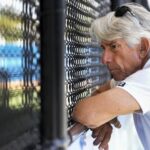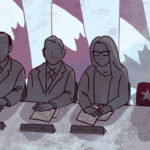In what many are calling the legal battle of the music world, Drake’s defamation lawsuit against Kendrick Lamar had its first significant court hearing yesterday at the Ontario Superior Court in downtown Toronto. The case, which stems from their increasingly personal rap feud, has transformed from lyrical sparring to legal warfare, raising fascinating questions about where artistic expression ends and defamation begins.
“This case represents uncharted territory in entertainment law,” said Toronto-based entertainment attorney Samantha Wilson, who was present during the proceedings. “The court must determine if rap battle lyrics, traditionally understood as competitive art form, can constitute actual defamation.”
Drake’s legal team, led by prominent Toronto attorney James Richardson, argued that Lamar’s recent tracks crossed the line from artistic competition to malicious falsehoods designed to damage Drake’s reputation and business interests. The lawsuit specifically cites Lamar’s allegations about Drake’s personal life and family relationships.
“What we’re seeing is unprecedented in hip-hop history,” explained Marcus Thompson, music industry analyst with the Toronto Entertainment Business Association. “The stakes are enormous not just for these artists but potentially for the entire industry.”
The courtroom was packed with media, legal observers, and music industry representatives. Drake, wearing a tailored navy suit, appeared stoic throughout the three-hour proceeding, while Lamar’s legal representation argued their client’s words fall squarely within artistic expression protected by free speech provisions.
Interestingly, the case has divided Toronto’s hip-hop community. Local producer Jayson Williams told me, “This isn’t just about two rappers anymore. This could change how artists express themselves forever.”
Judge Eleanor Hamilton emphasized the complex nature of the case, noting the court must balance artistic traditions against potential real-world harm. “We must consider both the context of this specific artistic medium and the reasonable interpretation of these statements by audiences,” she stated.
Legal experts suggest this case could set precedents for how courts interpret artistic speech in the digital age. The Canadian Civil Liberties Association has already filed an amicus brief arguing for broad protection of artistic expression.
What makes this case particularly fascinating is how it forces the legal system to engage with hip-hop’s complex linguistic traditions. Dr. Alisha Reynolds, professor of music and cultural studies at Ryerson University, explains: “Battle rap has always involved exaggeration and theatrical insults. The court will have to determine if audiences reasonably interpret these statements as factual claims or as performative competition.”
The financial implications are substantial. Industry analysts estimate Drake’s various business ventures generate over $75 million annually in the Greater Toronto Area alone, from his OVO brand to restaurant investments and real estate holdings.
The judge has scheduled additional hearings next month, with a potential trial date in early fall if mediation efforts fail.
As I left the courthouse yesterday, I couldn’t help reflecting on how this case represents a pivotal moment where art, commerce, and law intersect in ways we’ve never seen before. For Toronto’s music scene, which has long prided itself on fostering groundbreaking artists, the outcome could redefine the boundaries of artistic expression for generations to come.
Whether this case ultimately strengthens or constrains creative freedom remains to be seen, but one thing is certain: what began as a war of words has evolved into something that could reshape the relationship between art and law forever.







